Victory and the Price Paid
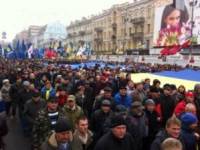 November 24 , 2013
November 24 , 2013
The EU-Ukraine Association Agreement was signed just over six months after the regime of former President Viktor Yanukovych broke all promises and announced that it was rejecting the agreement. And after the first protests that soon turned into EuroMaidan. The signing by Ukraine’s new President Petro Poroshenko was widely reported, as was the quite extraordinarily inadequate reaction by Russian President Vladimir Putin’s adviser, Sergei Glazyev. The video footage concentrated solely on the last days of EuroMaidan in Feb this year. Perhaps understandably, however EuroMaidan was much more, and despite the claims from Moscow was a predominantly peaceful moment, and the majority of those killed were totally peaceful protesters gunned down by police snipers.
Some of the other images
The first large rally in favour of European integration took place on Nov 24, with around 100 thousand people gathering in the centre of Kyiv.
The protests began slightly earlier and crucially received the support of the Ukrainian Catholic University and soon other universities who heeded UCU’s call to understand that Ukrainian youth’s future was in the balance and to “publically express their position and support for Ukraine’s European future”.
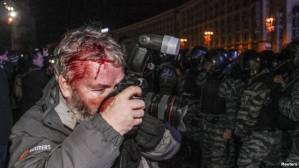
30 November 2013
The protests spread, however gained real momentum a week later with the outrage over the brutal dispersing of totally peaceful protesters, most young students, on Maidan Nezalezhnosti in the early hours of 30 November.
By the next day, Dec 1, there were around 1 million protesters in the centre of Kyiv. That day saw the most overt provocation especially on Bankova St near the president’s administration.
It also demonstrated the nature of EuroMaidan. Early in the afternoon, EuroMaidan activists were alerting people via social networks of the suspicious lack of virtually any police despite the massive crowd. There were, however, huge numbers of Berkut riot police and interior forces who just ‘happened’ to be waiting for a crowd of mostly masked young louts with a commandeered bulldozer.
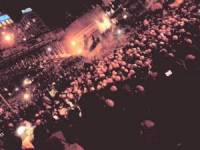 Maidan 10-11 December 2013. The bells of St Michael’s began ringing as in medieval times to warn of danger, while the social media were full of pleas for people to come to defend Maidan. Kyiv Post’s Katya Gorchitskaya reported that by around 5 a.m. there were around 20 thousand people gathered
Maidan 10-11 December 2013. The bells of St Michael’s began ringing as in medieval times to warn of danger, while the social media were full of pleas for people to come to defend Maidan. Kyiv Post’s Katya Gorchitskaya reported that by around 5 a.m. there were around 20 thousand people gathered
The role of social media was particularly clear during the night from Dec 10 – 11, when the government tried to storm and clear Maidan.
There was certainly violence, but almost solely directed against Maidan supporters. The situation changed after the ruling majority pushed through totally illegal and draconian anti-protest laws on Jan 16. It was only after that that the barricades were erected on Hrushevsky St and a relatively small number of protesters declared that they would use force in defending their rights. This resulted in the laws being revoked, although some of the worst aspects were almost immediately brought in through Cabinet of Ministers decisions.
The regime’s use of the police, hired thugs or titushki and the courts to try to suppress peaceful protest was condemned both within Ukraine and by foreign governments and human rights organizations.
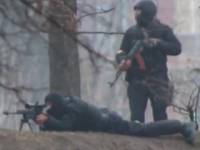
The distorted claims about a fascist junta having violently overthrown the government and seized power in late February were and continue to be at odds with the video footage which clearly showed unarmed protesters being gunned down.
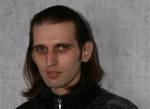 Yevgeny Kotlyar, a well-known environmental activist from Kharkiv
Yevgeny Kotlyar, a well-known environmental activist from Kharkiv
 Bohdan Solchanyk, a lecturer of Ukrainian History at the Ukrainian Catholic University. Killed on 20 February
Bohdan Solchanyk, a lecturer of Ukrainian History at the Ukrainian Catholic University. Killed on 20 February
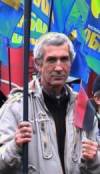 Georgy Aratunyan, 51, from Rivne. The Kyiv Armenian Community reported that Georgy Vaharkashovych was a widower. His 3-year-old daughter is now an orphan
Georgy Aratunyan, 51, from Rivne. The Kyiv Armenian Community reported that Georgy Vaharkashovych was a widower. His 3-year-old daughter is now an orphan
 20-year-old Roman Huryk from Ivano-Frankivsk was a philosophy student at the Vasyl Stefanyk Precarpathian National University. He was an only child and only grandchild.
20-year-old Roman Huryk from Ivano-Frankivsk was a philosophy student at the Vasyl Stefanyk Precarpathian National University. He was an only child and only grandchild.
See also: In Remembrance of those who died on Maidan
Memory of all those killed tinged the signing of the Association Agreement with immense poignancy. It also made the lies from the Kremlin in an attempt to justify ongoing aggression especially offensive.
Oleksandra Matviychuk, one of the leaders of EuroMaidan SOS, told Maidan a couple of months ago that Nebesna Sotnya [‘the Heavenly Hundred’, the term used for those who died on Maidan] imbued everything with a sense of real responsibility. This time there needs to be real reforms, real change. The price paid was too high, it must not have been in vain.





